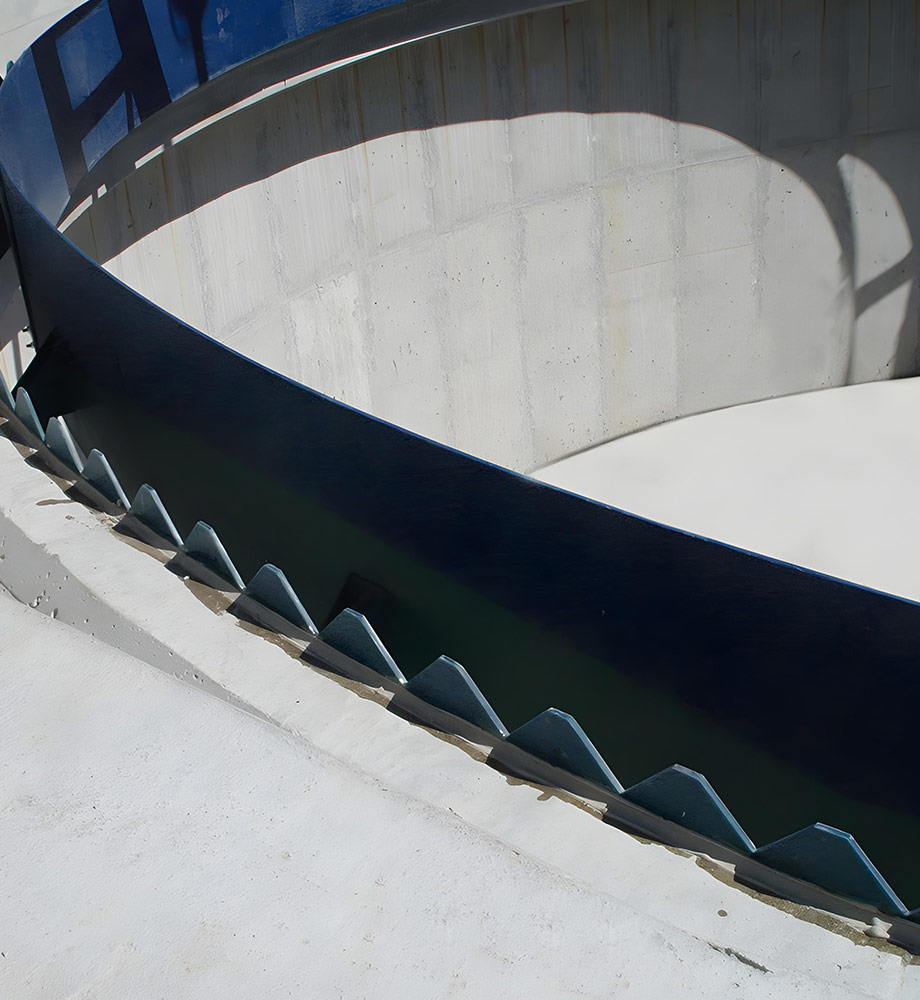Key Features
- Fiberglass Panels: Machined or molded FRP panels (5–12 mm thick) cut to specified weir profile (sharp or dull crests, multiple notches).
- Heavy-Duty Brackets: FRP or stainless supports fix the weir at the correct elevation; splice plates join panels tightly.
- No Corrosive Metals: All submerged parts are FRP or 316SS, eliminating rust and maintenance.
Benefits
- Consistent Overflow: Precise weir heights ensure uniform flow and prevent short-circuiting in tanks. Longer panels (up to 3–6 m) mean fewer joints, so the chance of leaks is reduced.
- Lifetime Durability: FRP weirs will not warp or pit, unlike wood or metal; levels stay reliable.
- Easy Replacement: Panels can be slipped in or out of slot frames for cleaning or reconfiguration.
Applications
Clarifiers, sedimentation basins, filter backwash troughs, flash mixers and any basin requiring controlled discharge. Weirs are often paired with FRP scum baffles in clarifiers to remove floating debris.
Technical Specifications
Weir thickness and channel width sized for the design flow (commonly 6–10 mm FRP). Notch dimensions and spacings per process design. Panels meet AWWA F102 (notched weirs) where applicable.
Unique Selling Points
Our FRP weir systems are pultruded for maximum glass content (higher strength than hand-laid alternatives). They are designed “to meet or exceed industry standards” and are UV-stabilized to avoid degradation.

